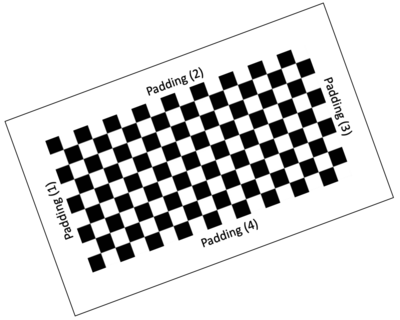estimateCheckerboardCorners3d
Estimate world frame coordinates of checkerboard corner points in image
Syntax
Description
imageCorners3d = estimateCheckerboardCorners3d(I,cameraIntrinsic,checkerSize)I, by using the camera intrinsic parameters
cameraIntrinsic and the size of the checkerboard squares
checkerSize.
[
additionally returns the checkerboard dimensions
imageCorners3d,boardDimensions] = estimateCheckerboardCorners3d(I,cameraIntrinsic,checkerSize)boardDimensions.
[
estimates the world frame coordinates of the corner points of a checkerboard from a set of
image files, imageCorners3d,boardDimensions,imagesUsed] = estimateCheckerboardCorners3d(imageFileNames,cameraIntrinsic,checkerSize)imageFileNames. The function returns a logical vector that
indicates in which images it detected a checkerboard, imagesUsed, in
addition to output arguments from previous syntaxes.
[___] = estimateCheckerboardCorners3d(
estimates the world frame coordinates of the corner points of a checkerboard from an array
of images, imageArray,cameraIntrinsic,checkerSize)imageArray.
[___] = estimateCheckerboardCorners3d(___,
specifies options using one or more name-value pair arguments in addition to any combination
of arguments from previous syntaxes. For example, Name,Value)'MinCornerMetric',0.2
sets the threshold for the checkerboard corner metric to 0.2.
Examples
Input Arguments
Name-Value Arguments
Output Arguments
Limitations
Partial detection of checkerboard is not supported.
Version History
Introduced in R2020b

